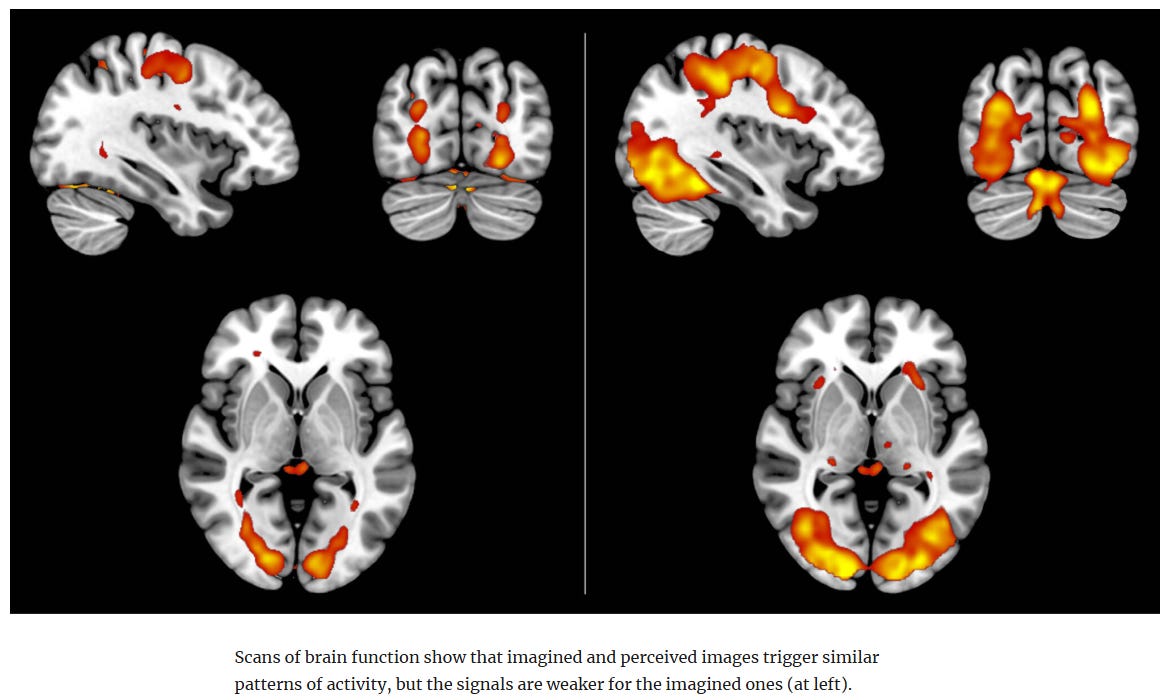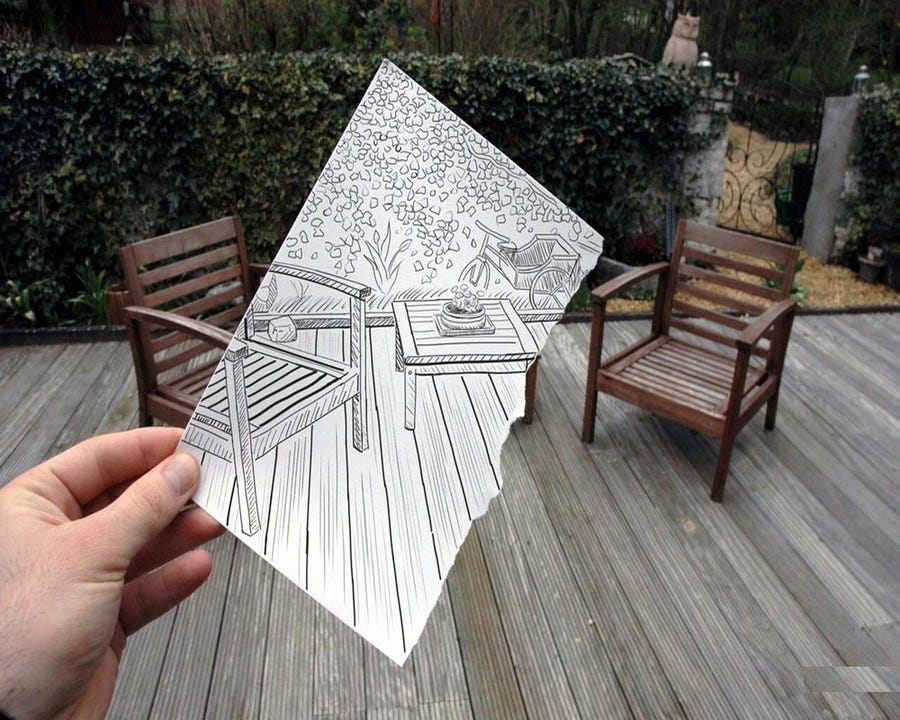The Truth About Perception: Are Your Memories Real?
Exploring the Fine Line Between Illusion and Reality in Our Minds.
Have you ever paused to wonder if an event truly happened, or if your mind constructed an elaborate image of it? This question isn't just a fleeting thought but a profound exploration of how we, as humans, process and understand our experiences.
Let me tell you one or two stories of mine that inspired this thought-
I was once sitting by myself, introspecting about a situation that had been bothering me for a while. It felt so real in my head—every detail vivid, every emotion intense. But when I decided to talk to my friend about it, I realized none of it was like what I had imagined. In fact, it was far from the truth.
And yet, in that moment, my thoughts felt so real. Too real to not be true. But if my version of the story wasn't reality, what about hers? Could her perception have been just as flawed as mine? That made me stop and wonder: Are our thoughts even real?
Another time, I was watching a TED Talk on YouTube. The speaker mentioned a fascinating piece of research—neuroscientists discovered that imagining a scenario activates the brain in ways remarkably similar to experiencing it firsthand. That struck a chord with me. If our brains light up the same way for imagined and real experiences, then where do we draw the line between illusion and reality?
In a world where memory, imagination, and perception collide, the line between reality and illusion becomes astonishingly thin. What shapes our understanding of events? How does our brain decide what’s real and what isn’t? Let’s dive into the fascinating interplay between perception and truth.
The Brain: A Master Architect of Reality
The human mind is a masterpiece, but it’s not always a reliable narrator. Our thoughts, memories, and emotions all weave a version of reality that feels indisputably true in the moment. But here’s the kicker—our memories can be flawed, our perceptions skewed, and our emotions can fill in the gaps with their own colors.
Our brains are designed to interpret and construct reality, but this process is far from flawless. According to research, the same neural networks that help us recall past events are also responsible for imagining the future. This overlap means our memories often blend facts with imaginative elements, making them susceptible to distortion.
Think about it. Have you ever had a vivid memory of an event, only to have someone else’s recollection completely contradict yours? Research backs this up: memory is malleable. It’s not a perfect recording of events but rather a reconstruction shaped by emotions, context, and even suggestions from others.
Studies like The Future of Memory highlight that memory and imagination share a common network in the brain. This network not only stores past experiences but also reconstructs them, influenced by emotions, context, and even cultural narratives. As a result, our understanding of reality becomes an ever-shifting landscape.
When Perception Becomes Deception
How does the brain differentiate between perception and imagination? It’s all about signal strength. Research published in Subjective Signal Strength Distinguishes Reality from Imagination suggests that reality judgments rely on the intensity of sensory signals. If the signal crosses a "reality threshold," the brain deems it real. However, this process isn’t foolproof. Our brains can create vivid mental images that feel just as real as actual events.
This phenomenon becomes even more intriguing when we consider false memories—detailed recollections of events that never occurred. Such memories demonstrate how imagination and suggestion can blur the boundaries of reality.
Each time we revisit a memory, we’re subtly rewriting it, influenced by who we are in that moment. What’s more, studies show that imagining scenarios—daydreaming, worrying, or visualizing—can feel as real to the brain as actually living them. It’s not just about what happened; it’s about what we believe happened.
The Role of Emotion in Shaping Reality
Emotions are powerful. They can enrich our experiences, making memories more vivid and meaningful. A study from Psychology Today explains that our perception of reality is heavily influenced by our emotional state.
But they can also distort reality. Anxiety, for instance, can make imagined threats feel like imminent dangers. Nostalgia can make the past seem rosier than it was. Even love can blur the line between perception and reality, making us see people and situations in ways that align with our feelings, and not the facts. When faced with uncertainty, our minds often fill in gaps with familiar or comforting narratives. We even have a word for it, yep you guessed it right! Being Delululu. Even though this process works as a great coping mechanism in some situations, but it further drifts us far away from objective reality.
So, how do we navigate this tricky terrain? How do we anchor ourselves when the mind blurs the boundary between illusion and reality?
Imagination: The Shadow of Reality
While imagination is often dismissed as “not real,” it’s a fundamental part of our cognitive process. Neuroscientists have found that imagining a scenario activates the brain in ways remarkably similar to experiencing it firsthand. This explains why visualization techniques are so effective in everything from sports to therapy.
However, this similarity also raises questions about the authenticity of our experiences. If the brain reacts similarly to imagined and real events, how do we ensure that what we remember aligns with objective reality? How do we ground ourselves in the truth?? Here’s some ways that I found while researching and felt like the best possible solutions to our delusions:
Seek Perspective: Talking to others about your experiences can help. Different perspectives can offer clarity and challenge your assumptions. (Perspectives that you should follow while being self aware: believe your hommies when they say something isn’t right for youuuu, they know you better that you know yourself! Considering the fact that they are your best buddies.)
Mindfulness Matters: Stay present. Observing your thoughts without judgment can help you separate what’s real from what’s imagined. Journaling helps bigtime.
Verify Facts: When in doubt, check the facts. Memory and perception may falter, but objective evidence can serve as a reliable anchor.
Embrace Uncertainty: It’s okay to acknowledge that not everything in our minds is a mirror of reality. Accepting this can help you approach situations with curiosity rather than certainty.
The Philosophy of Illusion and Reality
Philosophers have long grappled with the nature of reality. From Plato’s Allegory of the Cave to Descartes’ famous declaration, “I think, therefore I am,” the question of what constitutes reality has been central to human thought. Modern neuroscience adds another layer to this debate, suggesting that reality is not an absolute but a construct shaped by our perceptions.
As Quanta Magazine’s article Is It Real or Imagined? aptly puts it, our brains act as reality filters, piecing together fragments of sensory input and imagination to create a cohesive narrative. Yet, this narrative is inherently subjective, shaped by our unique experiences and biases.

Where Do We Go From Here?
Understanding the interplay between illusion and reality can help us navigate a world filled with uncertainty. By questioning our perceptions and seeking objective truths, we can better discern fact from fiction. It’s not about distrusting our memories or emotions but about acknowledging their fallibility.id it truly happen, or is it just a mental construct? Perhaps the answer lies in embracing the fluidity of our experiences. Reality, after all, is not just about what’s out there but also about how we perceive and interpret it.
What do you think? Is reality an objective truth, or is it just a beautifully crafted illusion? Share your thoughts as we continue to explore this intriguing intersection of perception and truth.





Questioning perception while also being wary of others agenda, that would be the optimal place to be mentally. That would eliminate much of the uncertainty that plagues humanity.
In the art of reminiscing, we all are artists . There can be no memory without selection and embellishing.